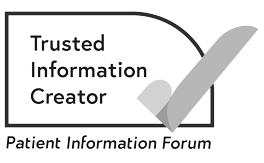Chemoradiation for rectal cancer
Chemoradiation is a combination of chemotherapy and radiotherapy. It is sometimes called chemoradiotherapy.
Rectal cancer chemoradiation
Chemoradiation is when you have chemotherapy and radiotherapy at the same time. It is sometimes called chemoradiotherapy. Chemotherapy drugs make cancer cells more sensitive to radiotherapy.
This can help the radiotherapy to work better. Having both treatments often works better than having either treatment on its own.
You may have chemoradiation for rectal cancer:
- before surgery, to help shrink the cancer and reduce the risk of cancer coming back in or around the rectum
- after surgery, to reduce the risk of cancer coming back in or around the rectum.
The chemotherapy drug most commonly used for rectal cancer is capecitabine. You take capecitabine as tablets. You start the tablets on the first morning of your radiotherapy. You take them throughout your radiotherapy.
There are different schedules for taking capecitabine tablets. Your doctor or nurse will tell you when and how often you should take them.
Related pages
Before chemoradiation for rectal cancer
Before starting this treatment, you should have a blood test to check whether you have low levels of an enzyme called DPD. This is called DPD deficiency.
People who have low DPD levels can develop serious or life-threatening side effects if they have certain chemotherapy drugs. This includes capecitabine and 5FU. If you have DPD deficiency, this can affect the treatments that are available for you.
Side effects of chemoradiation
Having chemotherapy and radiotherapy together can make the side effects worse. Your cancer doctor or specialist nurse can give you more information about chemoradiation and its possible side effects.
During chemoradiation, you will usually have weekly blood tests to monitor the levels of your different blood cells.
About our information
This information has been written, revised and edited by Macmillan Cancer Support’s Cancer Information Development team. It has been reviewed by expert medical and health professionals and people living with cancer.
-
References
Below is a sample of the sources used in our rectal cancer information. If you would like more information about the sources we use, please contact us at
informationproductionteam@macmillan.org.uk
National Institute for Health and Care Excellent (NICE). Colorectal cancer. NICE guideline [NG151]. Updated December 2021. Available from: www.nice.org.uk/guidance/NG151 [accessed Jan 2023].
Cervantes A, Adam R, Rosello S, et al. Metastatic colorectal cancer: ESMO Clinical Practice Guideline for diagnosis, treatment and follow-up. Annals of Oncology. 2023 ;34(1):10-32. Available from: www.annalsofoncology.org [accessed Jan 2023].
Sanoff HK. Improving treatment approaches for rectal cancer. New England Journal of Medicine. 2022;386(25); 2425–2426. Available from: www.doi.org/10.1056/NEJMe2204282 [accessed Jan 2023].
Date reviewed

Our cancer information meets the PIF TICK quality mark.
This means it is easy to use, up-to-date and based on the latest evidence. Learn more about how we produce our information.
The language we use
We want everyone affected by cancer to feel our information is written for them.
We want our information to be as clear as possible. To do this, we try to:
- use plain English
- explain medical words
- use short sentences
- use illustrations to explain text
- structure the information clearly
- make sure important points are clear.
We use gender-inclusive language and talk to our readers as ‘you’ so that everyone feels included. Where clinically necessary we use the terms ‘men’ and ‘women’ or ‘male’ and ‘female’. For example, we do so when talking about parts of the body or mentioning statistics or research about who is affected.
You can read more about how we produce our information here.




